Celebrating the 75th Birthday of Radar in South Africa

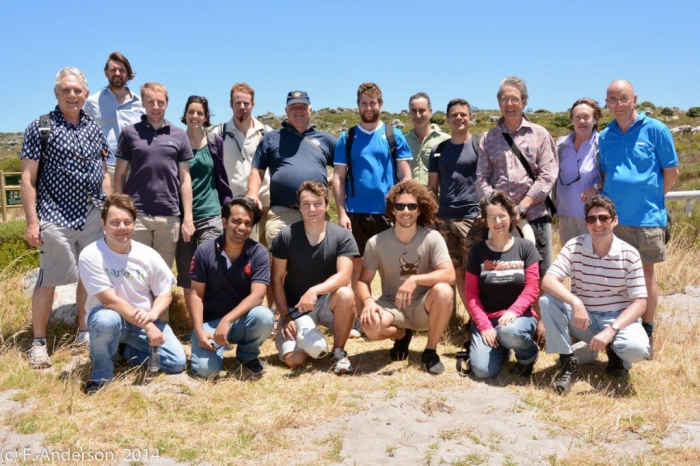
The 16th of December 2014 marked the 75th birthday of Radar in South Africa.
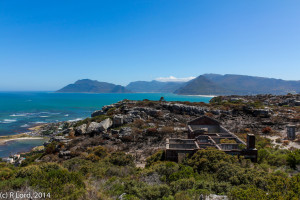
On 16 December 2014, a group from the University of Cape Town hiked up to the top of Slangkop, a rocky hill overlooking the far-away suburb of Kommetjie in the Southern Peninsula. Our group consisted of students and lecturers from the Radar Remote Sensing Group (RRSG) at the University of Cape Town, as well as various people from industry in the fields of radar, remote sensing and electronic defence. Our destination was the abandoned old radar station ontop of Slangkop. The nearby accommodation huts are known as Cobra Camp.
Group photo above: Back row – Francois Anderson, Andrew Wilkinson, Daniel & Juliane O’Hagan, Craig Tong, Mike Inggs, Sam Vandeleur, Alex Bassios, Rodolfo Azevedo Lima, John Ritchie, Elaine & PW van der Walt. Front row: Andrew Nicol, Abhishek Bhatta, Ivan Tchekashkin, Gabriel Lellouch, Reggie & Richard Lord.
Prof Mike Inggs of the RRSG and Francois Anderson of the CSIR kept us spellbound with their fascinating stories about the birth of SA radar and the particulars of the coastal radar station sites.
Cobra Camp is the site of the JB series of radar, which is the first series of operational South African radars that saw active service in East Africa (1940) and the Middle East (1941-42). Their development was shrouded in secrecy. (The history of radar in South Africa during World War 2 is recounted here, and a fascinating article on the Special Signal Services or SSS can be found here.)
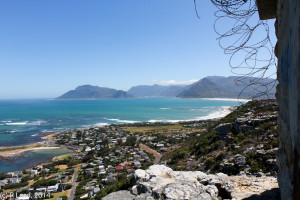
It was a pleasant and easy walk to the site, and fun to explore the ruins – which are, sadly, heavily vandalised and graffiti’d.
The military personnel (apparently it was mainly women) who operated the radar station and kept a lookout for enemy ships lived in the barracks – a large red-brick building, which no longer has a roof. We tried to identify the kitchen, the dining room, sleeping quarters, bathrooms and toilets; all the fittings are long gone, of course.
A narrow footpath leads to a somewhat smaller building, the lookout station, whose cement slab roof has partly collapsed; the views from here are absolutely spectacular. This was where the watchkeepers swept the ocean view with their binoculars, to extract bearing information of targets, which were then relayed – by telephone – to a central ‘filtering room’ (or ‘Freddie’) at the Castle of Good Hope in central Cape Town. Clearly, this optical watch was degraded at night and during foggy and rainy weather.
A scramble up a steep rocky path leads to a third, much smaller, building high up on a rocky outcrop – the antenna mount and equipment room, where all the equipment was housed. The radar range and bearing readings were also sent to the Freddie, and of course gave results by day and night. Some distance behind this, tucked away between bushes and boulders, was a small cement structure, which most likely sheltered the generator.
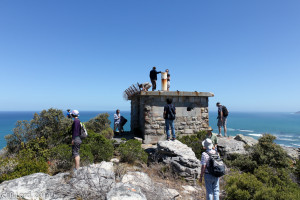
The plot would be placed on a table in the filter room and subsequent readings would be taken on the object at short intervals so that a track developed. Other stations might be reading the same object, and ‘Freddie’ would filter the plots to get as accurate a track as possible. This information would then be conveyed to an adjacent Combined Operations Unit (representing the Army, Navy and Air Force) and, when it was considered necessary, Ops would send an aeroplane or patrol boat to investigate the source of unusual echoes.” (http://samilitaryhistory.org/vol112ml.html)
Peter Brain’s book titled “South African Radar in World War II“, published in 1993, contains an interesting anecdote involving the radar station at Slangkop:
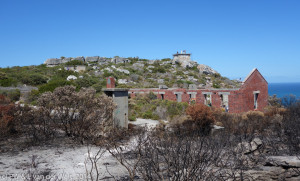
Cape Command never managed to locate the U-boat, but months later it was found off Dakar, when it was forced to surface after an air attack and was unable to dispose of its papers because of the presence of a British vessel. The log showed that, on the day concerned, it had charged its batteries off Slangkop until 06.00 and had then torpedoed a freighter at 12.03. Cape Command held an enquiry under the chairmanship of Brigadier Boraine, which exonerated the SSS.(1)” (http://samilitaryhistory.org/vol112ml.html)
After exploring the ruins and trying to picture what it might have been like to live up here in the 1940s, we headed back to our cars. And, then, during a braai at Neptune’s Grill in Simon’s Town, we raised our glasses to Basil Schonland and the extraordinary pioneers who designed and built South Africa’s first radar systems.
